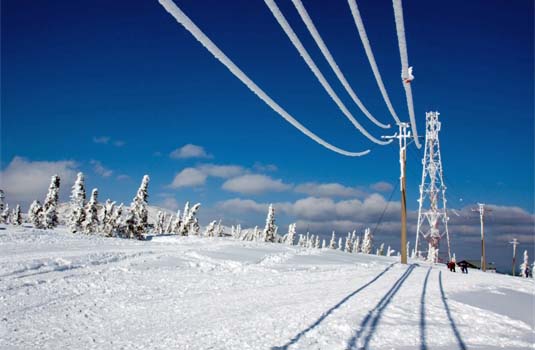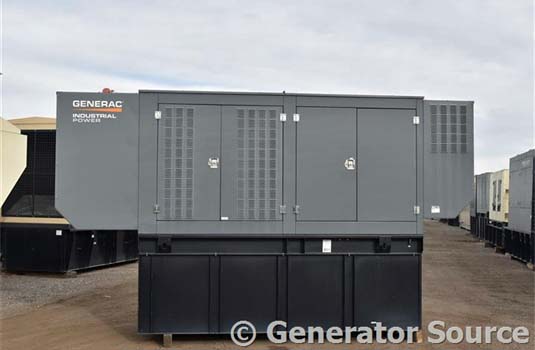|
 For many throughout North America, winter is already here; with snow already falling in some areas and right around the corner for others. Different geographical regions throughout the US & Canada experience winters of varying intensity due to the sheer size of the North American continent (third largest behind Asia and Africa),. For many throughout North America, winter is already here; with snow already falling in some areas and right around the corner for others. Different geographical regions throughout the US & Canada experience winters of varying intensity due to the sheer size of the North American continent (third largest behind Asia and Africa),.
Regions in the mid-west, north and east are known to experience severe winters that can often result in power outages and make everyday life difficult for many. Every winter, along with sub-zero temperatures, a number of these regions face devastating storms. Snowstorms, ice storms, and wind storms can all wreak havoc at times, bringing life to a standstill for days, weeks, and even months. These are often termed as “Deceptive Killers” since many of the casualties caused during winter are directly or indirectly due to these storms and their aftermath.
In addition to causing deaths, winter storms usually end up creating a wide variety of issues with the electrical power supply. Sometimes the entire region is blacked out for days or even weeks. In less severe cases, when the damage to power generating facilities and transmission and distribution lines is not as severe, power is usually restored in a few hours or in a day or two. In either case, the local economy and infrastructure are left paralyzed without power.
In the residential side, daily routines face a serious setback since most everyday activities are dependent on a consistent power supply. On the business front, it’s much more than just an inconvenience, as it can be devastating both physically and financially depending on the company. Let us take a closer look at these various types of storms and the damage they can cause and costs associated with them:
Winter Storms
In general, a meteorological storm occurs when a region of low air pressure is surrounded by high pressure areas. These conflicting forces create winds and temperature differentials that ultimately clash or combine to create storms. In winter, due to the low temperatures, these systems eventually turn into snow storms, ice storms, wind storms, and blizzards.
Ice storms
These are characterized by sub-freezing ground temperatures, coupled with an above-zero air temperature layer looming above ground level. When rain falls during these conditions, rain drops collide with the freezing ground and form an icy glaze that covers everything. The ice can coat power lines and trees and be so heavy that they quickly begin collapsing under the added weight. According to the standard definition provided by Wikipedia, 8mm of such a glaze coupled with a breeze is sufficient to knock down power poles. Of course, the icy ground also makes for extremely dangerous driving conditions and in most instances will bring a city or entire region to a near standstill.
Some instances of ice storms that have made the news include:
• On December 14, 2008, BBC reported the ice storm that hit Northern and Eastern parts of America including NY State and Massachusetts. They described it as “one of the worst storms of the decade”. More than a million homes including several businesses were plunged into darkness with no assurance of when the electric supply could be restored.
• A more recent example is that of the ice storms that blew over 9 Mid-Western states, including Kentucky, Arkansas, Oklahoma, Missouri, Indiana, and Virginia in January 2009. These storms killed over 40 people, downed power lines, and brought Louisville and its surrounding areas to a grinding halt. In the worst hit areas, the power supply was expected to be restored only by mid February. At the time this happened, 1 million homes were grappling with a lack of power supply.
Blizzards
Blizzards are typically characterized by continuous (3 hours or more), fast-moving winds (30 mph or more) which carry snow. The wind chill lowers the apparent temperature to levels much below the actual reading and visibility is often reduced to a quarter of a mile or less. Driving can become near impossible due to limited visibility and snow drifts can quickly become a real problem for roads, trees, and roofs. As with all the other storms, severe blizzards bring most regions to a grinding halt and are often accompanied with numerous power outages.
Some recent instances of blizzards include:
• From March 6 to10, 2008, the southern, eastern, and northern parts of America were hit by numerous blizzards. Reports indicate that 20,000 people in Vermont faced a loss of power supply due to the winter storm. 100,000 customers in New Jersey and 80,000 customers in Pennsylvania were left without power supply due to the severe weather and high winds. Airports, schools, commercial complexes and many businesses were forced to shut down. Almost 500 flights at Dallas-Fort Worth International Airport were cancelled due to the storms.
Wind Storms
As the name suggests, wind storms during the winter are just that, high velocity winds that blow under cold conditions. They are known to uproot or topple trees and power lines, and wreck entire concrete constructions.
Some instances of the havoc wreaked by wind storms include:
• The Hanukkah Eve Wind Storm of 2006 deserves special mention because it was a case of many firsts. Pacific winds stormed areas of the northwest United States, southern British Columbia, and Canada on December 14 and 15. In the United States, Washington and Oregon were the worst hit. Wind speeds of 70–100mph were recorded and a record of 1 inch of rain over an hour fell over Seattle—a once in a 99 year event. Damages totaled to more than $220 million. Many people lost their lives and the affected areas were left without electricity for days. Businesses took a bad hit as well having to shut down until everything subsided.
Backing up Power with Generators
 As it is with most natural disasters and major storms, power from the grid is typically one of the first things to go. While you can only do so much to prepare for these types of things, one thing you do have control of is making sure you have backup power in an emergency by having an on-site power generator that’s ready to operate during an emergency. As it is with most natural disasters and major storms, power from the grid is typically one of the first things to go. While you can only do so much to prepare for these types of things, one thing you do have control of is making sure you have backup power in an emergency by having an on-site power generator that’s ready to operate during an emergency.
It often takes most people or businesses experiencing just one extended power outage before they are in the market for a generator as a result of the extreme inconvenience of living without power. You can spare yourself that one negative experience and cut your risk by getting prepared before it happens, and install a generator now prior to the heart of the winter storm season.
Generators come in a range of sizes and can be installed as one single unit or as a group of several small units connected in parallel. Generators typically use diesel, natural gas, or gasoline as fuel sources, with diesel generators being the most common. Generators can be installed with automatic transfer switches that monitor the voltage of the utility lines.
Upon sensing a power failure, a transfer switch immediately signals the generator to start up. Once the generator starts supplying consistent power, the automatic transfer switch shuts off the utility line while still monitoring its voltage levels. Once the power supply resumes, the switch detects it and signals the generator to automatically stop supplying power. This alleviates the need to start the generator manually and can provide speedy backup power in the event of a power outage, which is critical for most business and commercial applications.
During winter storms many lives are jeopardized. People die or suffer injuries due to accidents on icy roads that have been plunged into darkness due to power failure. If immediate medical attention is not rendered to those who are injured or suffering from hypothermia, the potential for fatalities dramatically increases. Under such conditions, it becomes imperative that hospitals, health care facilities, and rescue units are provided with a consistent backup power supply. These are time sensitive industries and any delay in action can lead to disastrous consequences. Patients already undergoing critical treatments and on life support can be at a risk of losing their lives if the facilities do not have adequate backup electric power.
Communication becomes critically important and any delay in transmitting news or communications to rescue agencies can lead to further loss of lives. Telecommunication and satellite towers should have adequate and reliable back up using multiple generators to avoid any failures. On the economic front, banking and financial institutions are totally dependent on a continuous power supply as well. They maintain their entire client database on computers. In the case of a power outage from a storm, valuable information can be lost leading to huge financial losses. Daily transactions such as credit card usage, money transfers, and stock trading are also conducted electronically. In many instances of prolonged power failure where adequate back up has not been made available, large financial losses are known to have occurred.
Conclusion
Every year millions of lives are affected due to winter storms. Based on what we’ve seen over the past handful of years, many of these storms have become more frequent and intense and must be taken seriously as life threatening and there is little we can do to stop the occurrence of these storms. However, what we can do is to prepare ourselves for such eventualities so that we are better equipped to deal with them. If you are in one of the regions more prone to this type of weather, keep your home and business backed up with a generator. It is an investment that offers a great piece of mind and insures you against all sorts of unwanted consequences and losses.
|